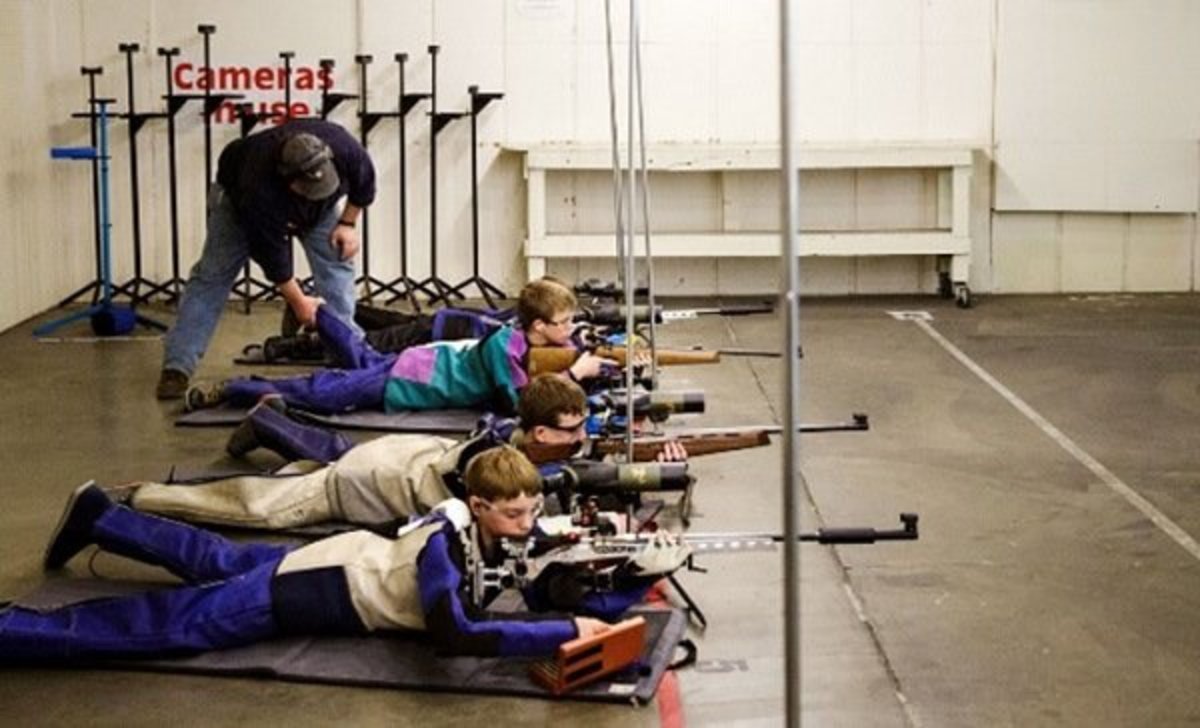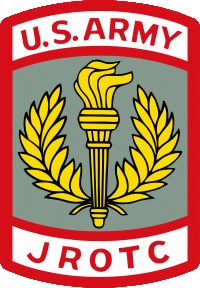
(May 18, 2018) — New York Assemblymember Linda Rosenthal has introduced Assembly Bill A10428 to prohibit marksmanship programs in New York state public schools. Rosenthal frames the legislation by writing, “To create a true gun-free school zone we cannot allow students to possess and discharge firearms on school property.”
The measure has riled 2nd Amendment enthusiasts while liberals generally see it as an overdue, common-sense measure. No one, however, has addressed the potential for lead contamination associated with the military’s Junior Reserve Officers’ Training Corps Program’s (JROTC) Marksmanship Program.
The air gun rifles used in 1,871 high schools with JROTC marksmanship programs across the country discharge lead at the muzzle end of the firing line. Every pellet being fired down the barrel scrapes out the deposits from the pellets that went before. Lead fragments fill the air and also settle on the floor by the target.
Let’s examine a New York school with an Army JROTC Marksmanship program that appears to be flouting lead regulations and endangering the health of its students.
Students at the Leadership Academy for Young Men in Rochester, NY use the boiler room of the High School to shoot their rifles. This video of cadets firing their weapons and checking their targets shows a general disregard for regulations designed to protect children from lead contamination.
This must-watch video depicts several violations regarding lead safety standards set by the Civilian Marksmanship Program in its 24-page pamphlet, Guide to Lead Management for Air Gun Shooting:
It is obvious there are no designated lanes on either side of the range for officials to check the targets. (CMP Guide – page 8 – “Personnel movements forward of the firing line should be reduced and restricted to marked lanes on either side of the firing points.”)
According to the CMP’s Guide to Lead Management, “If shooters do not move past the firing line to go downrange except as authorized, and if personnel who go downrange follow the guidelines.. there is no immediate health hazard to shooters or other persons who remain behind the firing line.”

This is obviously not happening in Rochester where students shoot their weapons and cross the firing line. The CMP’s lead guide calls for target changers to put on disposable shoe covers before walking over lead residues in front of the targets. The target changer is instructed to remove the shoe covers before re-entering the school building. The target changer should put on shoe covers. None of that is happening in Rochester. The kids walk through the lead deposits on the floor at the firing line on their way to the target line with heavy concentrations of lead on the floor. Then they track it through their school.
Fairfax County, Virginia had the same problem. The district tested the schools with air gun rifle ranges and found them to present a threat to public health. The schools were cleaned and lead ammunition was banned.
The CMP’s Guide to Lead Management refers to the firing line 32 times. It makes it very clear there are concentrations of dangerous lead contaminants that children can pick up and carry outside of the shooting range.
At the Leadership Academy in Rochester, students used their backpacks to balance the muzzle end of their rifles. Their backpacks were placed over the firing line, acting as mops collecting lead particulates. The poisonous material is carried home by students.
To clean up the deposits of lead at the firing line and target area the CMP advises, “a periodic wet mopping with a solution of water and tri-sodium phosphate” (TSP).
In 2012, the US Department of Housing and Urban Development advised that tri-sodium phosphate should be avoided when cleaning up the lead because it is deadly to the environment and no better than many other less harmful cleaning agents. New York has banned phosphates in detergents since 2010.
The Civilian Marksmanship Program directs students to wash their hands with soap and water after shooting. Since 2011 the National Institute for Occupational Safety and Health (NIOSH) has been warning the public that washing hands with soap and water is not completely effective in removing lead from the surface of the skin.
Some states have picked up on this in their public health advisories to shooters. For instance, Illinois tells shooters, “Use an effective lead removal product; standard soap and water is not enough to remove lead residues from your skin.”
The New York State Department of Health just tells shooters to wash their face and hands after shooting.
This is a big deal because the CDC says there is no acceptable amount of lead exposure for children.
Regular maintenance of high school firing ranges is a complex undertaking that requires strict adherence to many pages of detailed procedures. We don’t know how closely the JROTC instructors or the custodial staff in the state’s schools follow the “Guidelines for Airgun Range Design, Cleaning and Maintenance,” a section of the Guide to Lead Management.
Some Science
A Swedish study in 1992 analyzed the air in an indoor firing range that was used exclusively for air guns and found the air had lead levels an average of 4.6 micrograms per cubic meter (range 1.8 – 7.2 micrograms per cubic meter) The study documents the presence of airborne lead as a result of air rifle shooting and calls for special ventilation systems.
The CMP’s Guide to Lead Management rules out the possibility that JROTC shooting programs in the high schools create airborne lead particulates. The CMP relies on the work of a discredited Colorado firm to maintain that firing airguns do not contribute to airborne lead. This is important because high school cafeterias and gyms do not have appropriate ventilation systems to handle minute lead particulates.
The CMP’s 2013 Guide to Lead Management relies on the findings of Health & Environmental Technology LLC (HET), an environmental testing firm in Colorado Springs, Colorado, to dispel the notion that air guns shooting lead pellets create airborne particles. The sole employee of HET was Mr. Robert Rodosevich. Rodosevich came under scrutiny in Colorado in 2012 for “gross technical incompetence in technical compliance.” See the regulatory audit.
Meanwhile, HET’s work performed for the CMP is cited by high school officials across the country who are forced to defend the presence of indoor firing ranges in their schools by parents concerned about the potentially harmful effects of lead contamination.
In 2013, the California Department of Public Health recommended that the California Division of Occupational Safety and Health lower the permissible exposure limit for lead in air to 0.5 – 2.1 micrograms per cubic meter to keep BLLs below the range of 5–10 micrograms per deciliter.
Air in the Swedish study showed lead concentrations up to 7.2 micrograms per cubic meter from shooting just airguns. That’s three and a half times more than allowable in California. California is saying the air must have concentrations of lead less than 2.1 micrograms per cubic meter so that blood lead levels don’t exceed 10 micrograms per deciliter of blood.
Meanwhile, the CDC says children with blood lead levels above 5 micrograms per deciliter suffer from dangerous elevated blood lead levels.
According to research on the health effects of blood lead levels on pregnancy and fetus in utero, blood lead levels greater than 2.0 micrograms per deciliter cause gestational hypertension and reduced fetal growth and low birthrate.
There is limited evidence that this degree of lead poisoning causes pre-term birth, decreased post-natal growth, reduced cognitive function in prenatally exposed infants, ADHD & behavioral problems, and decreased auditory function. A 2009 study of shooters who fired only airguns reported blood lead levels of 1.8 – 12.7 micrograms per deciliter.
This is a big deal. Some historians point to lead contamination as one of the leading causes of the fall of the Roman Empire.
Although Rosenthal never mentions the military, many of the programs affected by her legislation are JROTC shooting programs in the schools that are run by the Army, Navy, Air Force, and Marines.
The military branches report the military runs a total of 61 JROTC programs in New York high schools. Of these, 19 have shooting programs. New York also has 32 junior clubs for children as young as eight. Many of these children participate with Boy Scout and 4-H clubs. See the NY data here.
Some of these children, along with those from the high school JROTC programs, may visit commercial firing ranges throughout the region for marksmanship competitions and firing range practice. According to a 2014 Seattle Times, report, the U.S. has an estimated 6,000 commercial indoor and outdoor gun ranges, (other estimates are 2-3 times higher) but only 201 have been inspected in the past decade.
Of those inspected, 86% violated at least one lead-related standard. In 14 states, federal and state agencies did not inspect a single commercial gun range from 2004 to 2013.
In 2014 the Seattle Times reported on 20 children in Vancouver who were sickened by lead after visiting a shooting range. The club has a junior team and allows the JROTC, the Young Marines and Boy Scouts
The Oregonian/Oregon Live reported on lead-contaminated National Guard armories in 2016, “In a former Montana National Guard armory where more than 20 workers got sick, lead-laced dust bunnies the size of tangerines clogged the ventilation system.
In two Oregon armories where parents unwittingly let infants crawl, the neurotoxin blanketed floors at levels as high as ten times the federal safety standard. In a Wisconsin armory classroom where pregnant women and mothers with infants learned about nutrition, the poisonous powder coated a desktop.”
The problems in National Guard firing ranges stand out because armories have routinely doubled as community event centers that bring in countless young children, including JROTC marksmanship programs. Inspectors found lead in 424 armories in the past four years, or nearly 90 percent of the places for which results are available.
35 armories in New York appear on the database. Unlike many states that reported on levels of lead contamination in their armories, most of New York’s armories reported that their facility had shooting ranges but that the concentration of lead on the surfaces and in the air were unknown. See the NY data here.
Posted in accordance with Title 17, Section 107, US Code, for noncommercial, educational purposes.